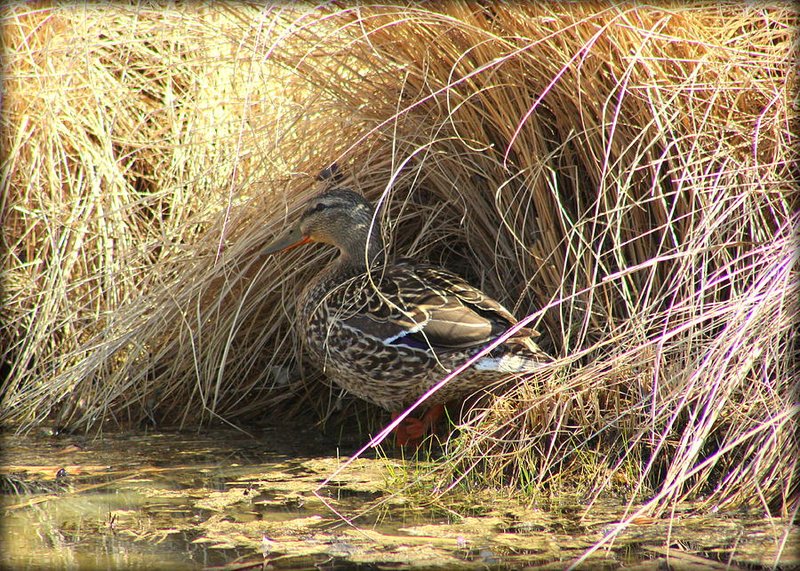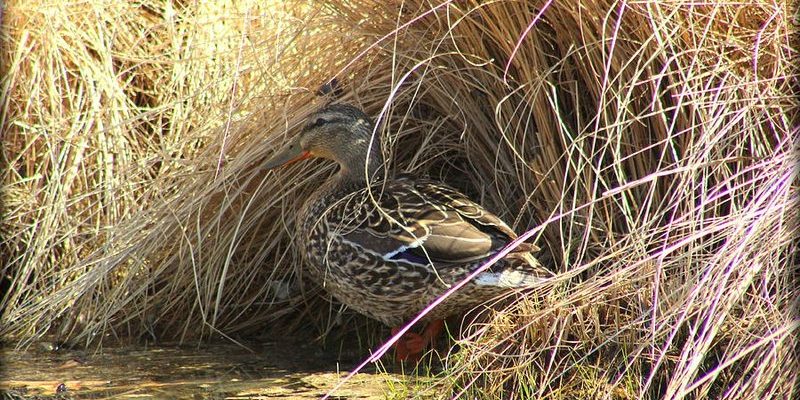
Ducks are not just casual nesters, either. Their nesting behaviors are quite methodical, ensuring the survival of their young. In this article, we’ll dive into the world of duck nesting habits, their lifecycle, and what makes these creatures so special. Buckle up; it’s going to be an enlightening journey through the lives of our feathered friends!
Understanding Duck Nesting Habits
Ducks are known for their unique nesting habits, which often vary among species. Generally, female ducks (called hens) are responsible for finding and building the nest. They typically prefer secluded areas near water sources, which provide safety and easy access to food for their ducklings after hatching. Think about it: a hidden nest in tall grass or reeds is much safer from predators than one out in the open.
The materials used for nest construction often include grass, reeds, and down feathers. This soft interior helps keep the eggs warm and cushioned. The hen will go through a meticulous process, carefully weaving together these elements to create a safe haven. Honestly, if you had to sit on eggs for weeks, you’d want a comfy spot, right?
Ducks are selective about their nesting locations, often returning to the same area year after year. This strong connection to their chosen spot highlights their instinctual ability to assess safety and resources. It’s a reminder of how important a stable environment is for successful breeding.
Breeding Seasons and Behavior
Breeding seasons vary based on the species and geographical location. In North America, ducks typically begin nesting in the spring when the weather warms up. It’s that time of year when nature starts to bloom, and ducks feel the urge to mate and raise their young. You might be wondering what drives this seasonal behavior. Well, warmer weather means better food availability, ensuring that the mother has the necessary nutrition for herself and her developing eggs.
Ducks often engage in courtship displays before mating. Male ducks (drakes) may perform elaborate rituals, showcasing their vibrant plumage and engaging in playful antics to attract a partner. It’s a bit like a dance-off—you’ve got to put your best foot forward to impress!
Once paired, the hen will begin to seek out a nesting site, and the drake will often stay nearby to protect her. They form a strong bond during this period, and it’s heartwarming to see how they look out for one another. This teamwork makes all the difference when it comes to raising their brood.
The Duck Nesting Process
When it’s time to lay eggs, the hen will settle into her nest. Typically, she will lay around 5 to 12 eggs, depending on the species. Each egg is usually speckled or camouflaged, blending seamlessly with the environment. This clever design helps keep them hidden from predators.
After laying her eggs, the hen will incubate them for about 28 days. During this time, she will leave the nest briefly to feed and drink but will return promptly to keep the eggs warm. Here’s the thing: the temperature is crucial! The eggs must be kept at a steady temperature for the embryos to develop properly.
Hens spend a lot of energy keeping those eggs safe, so it’s not uncommon for them to lose some weight during this time. Once the incubation period is over, you might hear the sweet sound of ducklings chirping inside their eggs. It’s a sign that they’re ready to break free!
The Ducklings’ First Days
Once the ducklings hatch, they’re surprisingly independent. Within hours, they can walk, swim, and forage for food. This quick development is vital for their survival. Hen ducks lead their little ones to water, where they learn to paddle and find food. Picture a tiny flock waddling toward a shimmering pond; it’s both adorable and necessary for their growth.
During these first days, the hen is a diligent protector. She keeps a watchful eye on her ducklings, ensuring they stay safe from predators. This bond between mother and ducklings is essential, as they rely on her guidance for safety and nutrition.
At the same time, ducklings are quite vulnerable and must learn to navigate their surroundings quickly. They often stick close to their mother, forming a tight-knit group or brood. This is more than just cuteness; it’s a survival strategy. Together, they’re less likely to fall prey to hungry animals.
Growth Stages of Ducklings
As ducklings grow, they undergo several developmental stages. The first few weeks are critical, as they learn to forage for insects, plants, and small crustaceans. At this stage, they start to develop their adult feathers, transitioning from the fluffy down they were born with to more mature plumage.
You might even notice a change in their behavior. Young ducks will often engage in playful swimming and chasing each other, which is essential for their social development. It’s like watching a group of kids in a park, all learning and growing together through play.
As they mature, they become more independent, eventually starting to explore further from their mother. By around 8 weeks, they are well-coordinated swimmers and can navigate their environment effectively. However, even at this stage, they still depend on her for guidance and protection.
Migration and Lifespan
As ducks mature and the seasons change, many species prepare for migration. This fascinating journey often takes them to warmer areas during the fall and back to breeding grounds in the spring. Migration is an instinctual drive that ensures ducks find the best habitats and food sources throughout the year.
In the wild, ducks can live anywhere from 5 to 10 years, depending on the species and environmental factors. However, those that face fewer predators and have access to abundant resources can live even longer. This lifecycle, from egg to adult, showcases the resilience and adaptability of these birds.
Challenges Ducks Face
While ducks are remarkable creatures, they face various challenges throughout their lives. Habitat loss due to urbanization and pollution is one significant threat, as it reduces the availability of safe nesting sites and food sources. Additionally, climate change affects their migratory patterns and the ecosystems they rely on.
Predation is another concern. Eggs and ducklings are especially vulnerable to animals like raccoons, snakes, and birds of prey. This constant threat underscores the importance of the mother’s protective instincts.
Conservation efforts can play a crucial role in helping maintain healthy duck populations. Organizations often work to protect wetlands and habitats, ensuring these beautiful birds have the resources they need to thrive. It’s a reminder that every action counts in preserving our wildlife.
The Beauty of Duck Family Life
Ultimately, the nesting habits and lifecycle of ducks reflect the wonders of nature. From the careful selection of nesting sites to the way ducklings learn and grow, each step is filled with purpose and beauty. Watching a hen with her ducklings is like witnessing the circle of life in action—a heartwarming reminder of the world we share.
So next time you spot a duck paddling around a pond or a brood of ducklings waddling after their mother, take a moment to appreciate the incredible journey they’ve taken. Ducks are a testament to the resilience of nature and the beauty of family life in the wild. By understanding their nesting habits and lifecycle, we can better appreciate these charming creatures and support conservation efforts to protect them for generations to come.

